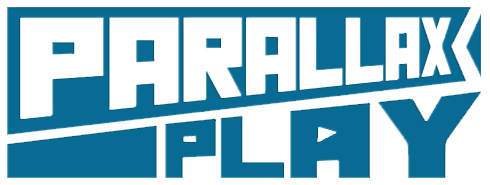In the latest Hatsune Miku game to grace our shores, the blue-haired virtual idol makes her western debut on the Nintendo 3DS in the form of Project Mirai DX. Containing almost 50 songs new to the series and from previous games, Mirai DX has a large selection of vocaloid tracks, along with multiple variations and plenty of extras to keep fans playing, whether newcomers or rhythm game veterans.

As you might have guessed from the ‘DX’ suffix, this isn’t the first entry in the Project Mirai series, but it’s an enhanced port of Project Mirai 2, which came out in Japan in 2013. While some may see this as just another vocaloid rhythm game from Sega, Project Mirai has a significantly different play style compared to the PlayStation exclusive project diva series and a change in the art style and presentation. Featuring Miku and the main Crypton Future Media vocaloid characters (and a few guest appearances from GUMI), Mirai DX uses the character models from the popular Nendoroid range of ‘chibi’ plastic figures giving everything a soft, cutesy look.
Considering the Nintendo 3DS’s lower graphical capabilities compared to the vita, and the perceived lower age group* many Nintendo 3DS owners fall into, the choice to base the game’s visuals on the Nendoroid characters makes perfect sense for this game. The chubby-faced characters look great in project Mirai, and you’ll likely be seeing a lot of these super-deformed characters when playing songs and when interacting with them in the’my room’ part the game.

The rhythm game mode is playable via two different control schemes, tap mode which makes use of the 3DS’s touchscreen & stylus & button mode, which is closer to project diva with a few changes in layout and actions. Tap mode is positioned as a more accessible way to play the songs and is somewhat similar to Theatrhythm, with you tapping on coloured sections of the touchscreen with the stylus in time with the note markers that spear on the top screen, occasionally swiping in different directions for special notes and sometimes drawing small circles for a score boost. If you’re not too familiar with rhythm games, this mode would be great for you to get started, but the more experienced players will want to play using the buttons instead. Tap mode will be the easiest way to get into the game but it sometime can feel like the swipes aren’t recognised as accurately as they should be, especially when doing consecutive swipes without lifting the stylus off the screen (which you’re encouraged to do to get combo bonuses)
Button mode is closer to project diva in that you use the face buttons and d-pad, but project Mirai uses them a bit differently. You’ll still hit the buttons in time with the markers on screen, but occasionally during the songs, you’ll get sections where you’ll need press the buttons and d-pad directions simultaneously. This is somewhat similar to the double (W) notes in PJD where you press x ,o, △, □, and the comparable direction together, but here, the buttons are independent from the d-pad and harder songs will have you pressing buttons and directions which wouldn’t usually correspond with each other. For example, if you think of B being the same as Down, A = Right, etc, some songs on hard mode will need you to hold B while pressing and Left, then Up then Down on the D-Pad. Using button mode feels very responsive and the timings felt spot on.

The songs each have Easy, Normal & Hard versions and are rated from 1 to 9 in terms of general difficulty. More ‘hardcore’ players of the Project Diva games may lament the lack of an Extreme mode, but the note arrangements on some of the faster, more difficult songs can rival some of the Extreme songs in Project Diva F, especially the 8s and 9s (invisible, matryoshka & Gaikotsu gakudan to lilia are some songs which can be quite tricky).
Although, you shouldn’t expect a 9 in Project Mirai to be the same difficulty as a 9 in Project Diva as you might not encounter anything as difficult as the hardest Extreme mode songs from PJD. But the six songs from the tracklist that you can unlock the secret ‘super hard’ mode for can get pretty close. I was perfectly fine with the difficulty of the songs on hard mode, but it would have been nice to have access to some of the challenge items from PDJ which are notably absent from Project Mirai. You do have access to a few items which you can buy with play coins, but these are mostly to assist you if you are having trouble with a song, with only 1 item available to add risk & reward to a song.
Even if the lack of a full selection of songs on extreme mode (or its equivalent super hard) might be a turn off, Mirai has a great selection of songs, almost half of which haven’t been featured in a Hatsune Miku game before and many popular returning songs like ‘World is Mine’, ‘Senbonzakura’ ‘Kokoro’ and more. It’s great that Mriai DX has so many songs packed in to a single game, ranging from new to old and different tempos as well. Since it’s her name on the box, the majority of songs are for Miku, but it’s surprising that there are very few sings for the other vocaloids, particularly if you’re a Meiko, Luka or Kaito fan. Of course, this won’t mean much if you’re not into vocaloid music, so perhaps listen to a song or two first if you’re coming to this without ever hearing vocaloid before.

outside of the main game, the rest of Mirai DX centres around a sort-of life simulator / virtual idol mode called ‘My Room’ , where you interact with the characters in a room/apartment you choose for them. Project Diva F / F2 had a similar mode with Diva Room, but the implementation seems more fleshed out and less isolated in Mirai DX. Here, you can hang out with the vocaloids, where you can play a game of reversi/othello aginst them, talk to them with the 3DS microphone and have snacks, change clothes, watch them roam about their room and interact with different items you’ve bought for them.
Occasionally a few small events/scenes will happen with your current character as they go about their business. I bought a hang-on bike for Luka’s room and sometimes she’ll jump on and start playing, while the main theme plays in the background (a nice bit of nostalgia for older fans). You can also buy new costumes and items for the room using mirai points you earn while playing mini games or the main rhythm game. If you save enough, you can even move to a penthouse apartment or have your vocaloid take a 1 week holiday to a tropical paradise. This part of the game might not be for everyone, but it’s cute and a relaxing way to take a break from the main game (It’s also a lot cheaper than playing with real Nendoroids anyway).

Outside of that, there are still plenty of extra features and distractions to explore when you feel aren’t furiously tapping or button mashing along to the song selection. You can view the videos for the songs you’ve unlocked so far, and post Nico-Nico style scrolling comments ,create your own dance routine and make a small tune with different vocals and instruments, all of which can shared with other people you encounter via Streetpass. There’s also a second minigame included, a Miku version of Puyo Puyo called Puyo Puyo 39 that you can play against the computer or against other against another person via local multiplayer. Since we haven’t gotten a proper Puyo Puyo release over here for a while, this is a welcome addition.
———————-
*I have no idea if the average 3DS owner is much younger than other console gamers, but it sounds about right, doesn’t it?
Review Summary
Incorporating both the touch and button modes in Project Mirai DX brings the best of both worlds, making this a great game whether you're an experienced player of rhythm games, or you're new to the genre. There's loads of songs to choose from as well as plenty of extra content to see outside of the main rhythm game chunk of DX, even the 'My Room' portion of the game provides a nice distraction while taking a break from playing the songs. Even if you're mildly interested in Vocaloids, Nendoroids or Rhythm games, there's a good chance you'll find something you'll like within Project Mirai DX.







